Role Scientist | Name Qian Xuesen Doctoral students Cheng Chemin Fields Aeronautics | |
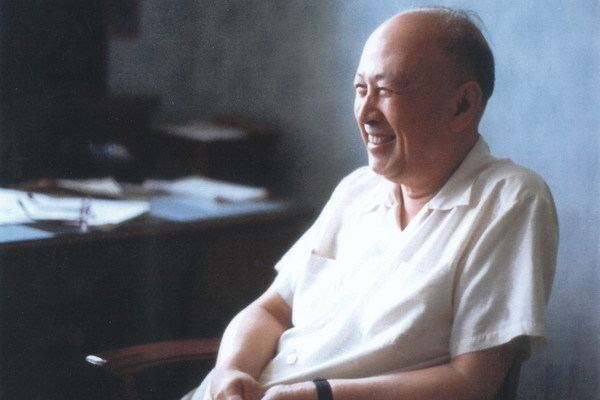 | ||
Born December 11, 1911Hangzhou, China ( 1911-12-11 ) Alma mater National Chiao Tung UniversityMassachusetts Institute of TechnologyCalifornia Institute of Technology Died October 31, 2009, Beijing, China Children Qian Yonggang, Qian Yungjen Similar People | ||
Doctoral advisor Theodore von Karman | ||
Qian Xuesen exhibition opened at California Institute of Technology
Qian Xuesen or Hsue-Shen Tsien (Chinese: 钱学森; 11 December 1911 – 31 October 2009) was a Chinese engineer who contributed to aerodynamics and rocket science. Recruited from MIT, he joined Theodore von Karman's group at Caltech, including the founding of the Jet Propulsion Laboratory. Later he returned to China as Qian Xuesen and made important contributions to China's missile and space program.
Contents
- Qian Xuesen exhibition opened at California Institute of Technology
- Qian xuesen documemtary
- Early life and education
- Career in the United States
- Detention
- Return to China
- Chinese nuclear program and other studies
- Later life
- Scientific papers
- Monographs
- References
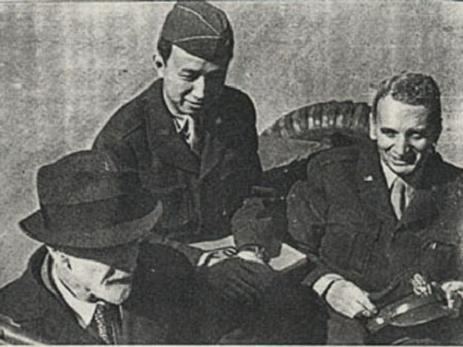
During the Second Red Scare in the 1950s, the United States government accused Tsien of communist sympathies. In 1950, despite protests by his colleagues, he was stripped of his security clearance. Tsien decided to return to China, but was detained at Terminal Island near Los Angeles.
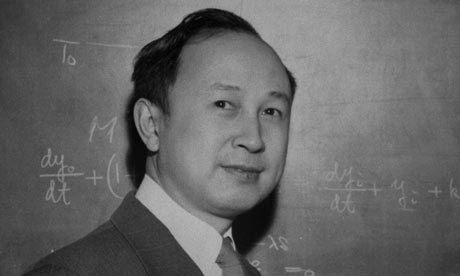
After spending five years under virtual house arrest, in 1955 Tsien was released in exchange for the repatriation of American pilots captured during the Korean War. He left the United States in September 1955 on the American President Lines passenger liner SS President Cleveland, arriving in China via Hong Kong.
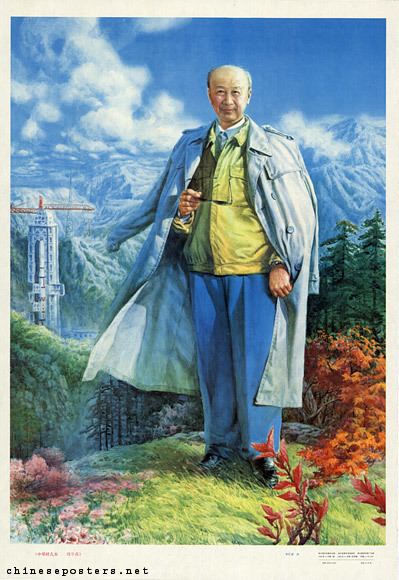
Upon his return, Tsien helped lead the Chinese nuclear weapons program. This effort ultimately led to China's first successful atomic bomb test and hydrogen bomb test, making China the fifth nuclear weapons state, and achieving the fastest fission-to-fusion development in history. Additionally, Qian's work led to the development of the Dongfeng ballistic missile and the Chinese space program. For his contributions, he became known as the "Father of Chinese Rocketry", nicknamed the "King of Rocketry".
In 1957, in recognition of his achievements, Qian was elected an academician of the Chinese Academy of Sciences .
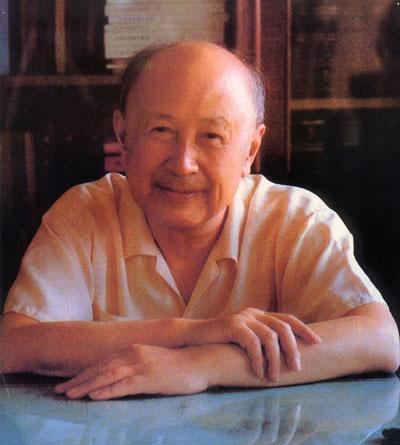
Tsien was the cousin of mechanical engineer Hsue-Chu Tsien, who was involved in the aerospace industries of China and the United States; his nephew is Roger Y. Tsien, the 2008 winner of the Nobel Prize in Chemistry. Named after him are Asteroid 3763 Qianxuesen and the ill-fated space ship Tsien in the science fiction novel 2010: Odyssey Two.
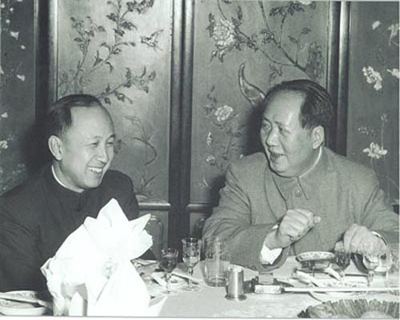
Qian xuesen documemtary
Early life and education
Qian Xuesen was born in Hangzhou, the capital of Zhejiang province, 180 km southwest of Shanghai. He left Hangzhou at the age of three when his father obtained a post in the Ministry of Education in Beijing. Qian graduated from The High School Affiliated to Beijing Normal University and attended Chiao Tung University, later known as Shanghai Jiao Tong University, in Shanghai in 1934. There, he received a degree in mechanical engineering with an emphasis on railroad administration. He interned at Nanchang Air Force Base.
In August 1935, Qian left China on a Boxer Indemnity Scholarship to study mechanical engineering at the Massachusetts Institute of Technology, where he earned a Master of Science degree after one year.
While at MIT he was called Hsue-Shen Tsien. He was influenced by the methods of American engineering education, especially its focus on experimentation. This was in contrast to the contemporary approach practiced by many Chinese scientists, which emphasized theoretical elements rather than "hands-on" experience. Tsien's experiments included plotting of pitot pressures using mercury-filled manometers.
Theodore von Kármán, Tsien's doctoral advisor, described their first meeting:
Kármán made his home a social scene for the aerodynamicists of Pasadena, and Tsien was drawn in: "Tsien enjoyed visiting my home, and my sister took to him because of his interesting ideas and straightforward manner."
Career in the United States
Shortly after arriving at Caltech in 1936, Tsien became fascinated with the rocketry ideas of Frank Malina, other students of von Kármán, and their associates, including Jack Parsons. Along with his fellow students, he was involved in rocket-related experiments at the Guggenheim Aeronautical Laboratory at Caltech. Around the university, the dangerous and explosive nature of their work earned them the nickname "Suicide Squad."
In 1943, Tsien and two other members of their rocketry group drafted the first document to use the name Jet Propulsion Laboratory, originally a proposal to the Army for developing missiles in response to Germany's V-2 rocket. This led to Private A, which flew in 1944, and later the Corporal, the WAC Corporal, and other designs.
Tsien’s willingness for public service was described by von Kármán:
Von Kármán wrote of Tsien, "At the age of 36, he was an undisputed genius whose work was providing an enormous impetus to advances in high-speed aerodynamics and jet propulsion." Furthermore, the American journal Aviation Week & Space Technology named Qian its Person of the Year in 2007, and commented on his interrogation of von Braun, "No one then knew that the father of the future U.S. space program was being quizzed by the father of the future Chinese space program."
During this time, he also worked on designing an intercontinental space plane. His work would inspire the X-20 Dyna-Soar, which itself would later influence the development of the American Space Shuttle.
Tsien married Jiang Ying (蒋英), a famed opera singer and the daughter of Jiang Baili (蒋百里) and his wife, Japanese nurse Satô Yato. The elder Jiang was a military strategist and adviser to Kuomintang leader Chiang Kai-shek. The Tsiens were married on September 14, 1947 in Shanghai, and had two children; their son Qian Yonggang was born in Boston on October 13, 1948, while their daughter Qian Yungjen was born in early 1950 when the family was residing in Pasadena, California.
Shortly after his wedding, Tsien returned to America to take up a teaching position at MIT. Jiang Ying would join him in December 1947. In 1949, with the recommendation of von Kármán, Tsien became Robert H. Goddard Professor of Jet Propulsion at Caltech.
In 1947 Tsien was granted a permanent resident permit, and in 1949 he applied for naturalization, although he could not obtain citizenship. Years later, his wife Jiang Ying said in an interview with Phoenix Television that Tsien could not raise the necessary funds.
Detention
By the early 1940s, US Army Intelligence was already aware of allegations that Tsien was a Communist, but his security clearance was not suspended. However, on June 6, 1950 his security clearance was revoked and Tsien was questioned by the FBI. Two weeks later Tsien announced that he would be resigning from Caltech and returning to China, which by then was effectively governed by the Communist Party of China led by Mao Zedong.
In August, Tsien had a conversation on the subject with the then Under Secretary of the Navy Dan A. Kimball, whom Tsien knew on a personal basis. After Tsien told him of the allegations, Kimball responded, "Hell, I don't think you're a Communist", at which point Tsien indicated that he still intended to leave the country, saying "I'm Chinese. I don't want to build weapons to kill my countrymen. It's that simple." Kimball then said, "I won't let you out of the country."
After the firm in charge of arranging Tsien's move back to China tipped off U.S. Customs that some of the papers encountered among his possessions were marked "Secret" or "Confidential," U.S. officials seized them from a Pasadena warehouse. The U.S. Immigration and Nationalization Service issued a warrant for Tsien's arrest on August 25. Tsien claimed that the security-stamped documents were mostly written by himself and had outdated classifications, adding that, "There were some drawings and logarithm tables, etc., which someone might have mistaken for codes." Included in the material was a scrapbook with news clippings about the trials of those charged with atomic espionage, such as Klaus Fuchs. Subsequent examination of the documents showed they contained no classified material.
While at Caltech, Tsien had secretly attended meetings with J. Robert Oppenheimer's brother Frank Oppenheimer, Jack Parsons, and Frank Malina that were organized by the Russian-born Jewish chemist Sidney Weinbaum and called Professional Unit 122 of the Pasadena Communist Party. Weinbaum's trial commenced on August 30 and both Frank Oppenheimer and Parsons testified against him. Weinbaum was convicted of perjury and sentenced to four years. Tsien was taken into custody on September 6, 1950 for questioning and for two weeks detained at Terminal Island, a low-security United States federal prison near the ports of Los Angeles and Long Beach.
When Tsien had returned from China with his new bride in 1947, he had answered "no" on an immigration questionnaire that asked if he ever had been a member of an organization advocating overthrow of the U.S. Government by force. This, together with an American Communist Party document from 1938 with Tsien's name on it, was used to argue that Tsien was a national security threat. Prosecutors also cited a cross-examination session where Tsien said, "I owe allegiance to the people of China" and would "certainly not" let the United States government make his decision for him as to whom he would owe allegiance to in the event of a conflict between the U.S. and communist China.
On April 26, 1951 Tsien was declared subject to deportation and forbidden from leaving Los Angeles County without permission, effectively placing him under house arrest.
During this time Tsien wrote Engineering Cybernetics which was published by McGraw Hill in 1954. The book deals with the practice of stabilizing servomechanisms. In its 18 chapters it considers non-interacting controls of many-variable systems, control design by perturbation theory, and von Neumann’s theory of error control (chapter 18). Ezra Krendel reviewed the book, stating that it is "difficult to overstate the value of Tsien's book to those interested in the overall theory of complex control systems." Evidently Tsien’s approach is primarily practical, as Kendel notes that for servomechanisms the "usual linear design criterion of stability is inadequate and other criteria arising from the physics of the problem must be used."
Return to China
Qian became the subject of five years of secret diplomacy and negotiation between the U.S. and China. During this time he lived under constant surveillance with the permission to teach without any classified research duties. Qian received support from his colleagues at Caltech during his incarceration, including president Lee DuBridge, who flew to Washington to argue Qian's case. Caltech appointed attorney Grant Cooper to defend Qian.
The travel ban on Qian was lifted on 4 August 1955 and he resigned from Caltech shortly thereafter. Qian departed from Los Angeles aboard the SS President Cleveland in September 1955 amidst rumors that his release was a swap for 11 U.S. airmen held captive by China since the end of the Korean War.
Under Secretary Kimball, who had tried for several years to keep Qian in the U.S., commented on his treatment:
"It was the stupidest thing this country ever did. He was no more a Communist than I was, and we forced him to go."
Immediately upon his return, Qian began a remarkably successful career in rocket science, boosted by the reputation he garnered for his past achievements as well as Chinese state support for his nuclear research. He led and eventually became the father of the Chinese missile program, which constructed the Dongfeng ballistic missiles and the Long March space rockets.
Chinese nuclear program and other studies
In October 1956, he became the director of the Fifth Academy of the Ministry of National Defense, tasked with ballistic missile and nuclear weapons development. He was part of the overall effort that resulted in the successful "596" atomic bomb test on October 16, 1964, and the "Test No. 6" hydrogen bomb test on June 17, 1967. This was the fastest fission-to-fusion development in history at 32 months, compared to 86 months for the United States and 75 months for the USSR, and gave China a thermonuclear device ahead of major Western powers like France.
Qian's reputation as a prominent scientist who essentially defected from the United States to China gave him considerable influence in the era of Mao Zedong and afterward. Qian eventually rose through Party ranks to become a Central Committee member. He became associated with the China's Space Program - From Conception to Manned Spaceflight initiative.
Qian was elected as an academician of the Chinese Academy of Sciences in 1957, a lifelong honor granted to Chinese scientists who have made significant advancements in their field. He organized scientific seminars and dedicated some of his time to training successors for his positions.
Outside of rocketry, Qian had a presence in numerous areas of study. He was among the creators of systematics, and made contributions to science and technology systems, somatic science, engineering science, military science, social science, the natural sciences, geography, philosophy, literature and art, and education. His advancements in the concepts, theories, and methods of the system science field include studying the open complex giant system. Additionally, he helped establish the Chinese school of complexity science.
From the 1980s onward, Qian had advocated the scientific investigation of traditional Chinese medicine, Qigong, and the concept of "special human body functions". He particularly encouraged scientists to accumulate observational data on qigong so that future scientific theories could be established.
Later life
Qian retired in 1991 and lived quietly in Beijing, refusing to speak to Westerners.
In 1979 Qian was awarded Caltech's Distinguished Alumni Award for his achievements. Qian eventually received his award from Caltech, and with the help of his friend Frank Marble brought it to his home in a widely covered ceremony. Furthermore, in the early 1990s, the filing cabinets containing Qian's research work were offered to him by Caltech. Most of these works became the foundation for the Qian Library at Xi'an Jiaotong University, while the rest went to the Institute of Mechanics at the Chinese Academy of Sciences.
Qian was invited to visit the US by the American Institute of Aeronautics and Astronautics after the normalization of the Sino-US relationship, but he refused the invitation, having wanted a formal apology for his detention. In a reminiscence published in 2002, Marble stated that he believed Qian had “lost faith in the American government” but that he had “always had very warm feelings for the American people.”
The Chinese government launched its manned space program in 1992, reportedly with some help from Russia due to their extended history in space. Qian's research was used as the basis for the Long March rocket, which successfully launched the Shenzhou V mission in October 2003. The elderly Qian was able to watch China's first manned space mission on television from his hospital bed.
In 2008, he was named Aviation Week and Space Technology Person of the Year. The recognition was not intended as an honor, but is given to the person judged to have the greatest impact on aviation in the past year. Furthermore, that year China Central Television named Qian as one of the eleven most inspiring people in China.
In July 2009, the Omega Alpha Association, an international systems engineering honor society, named Qian (H. S. Tsien) one of four Honorary Members.
On October 31, 2009, Qian died at the age of 97 in Beijing.
A Chinese film production, Qian Xue Sen, directed by Zhang Jianya and starring Chen Kun as Qian was released on December 11, 2011 in both Asia and North America, and on March 2, 2012 in China.
Science fiction author Arthur C. Clarke, in his novel 2010: Odyssey Two, named a Chinese spaceship after him.
